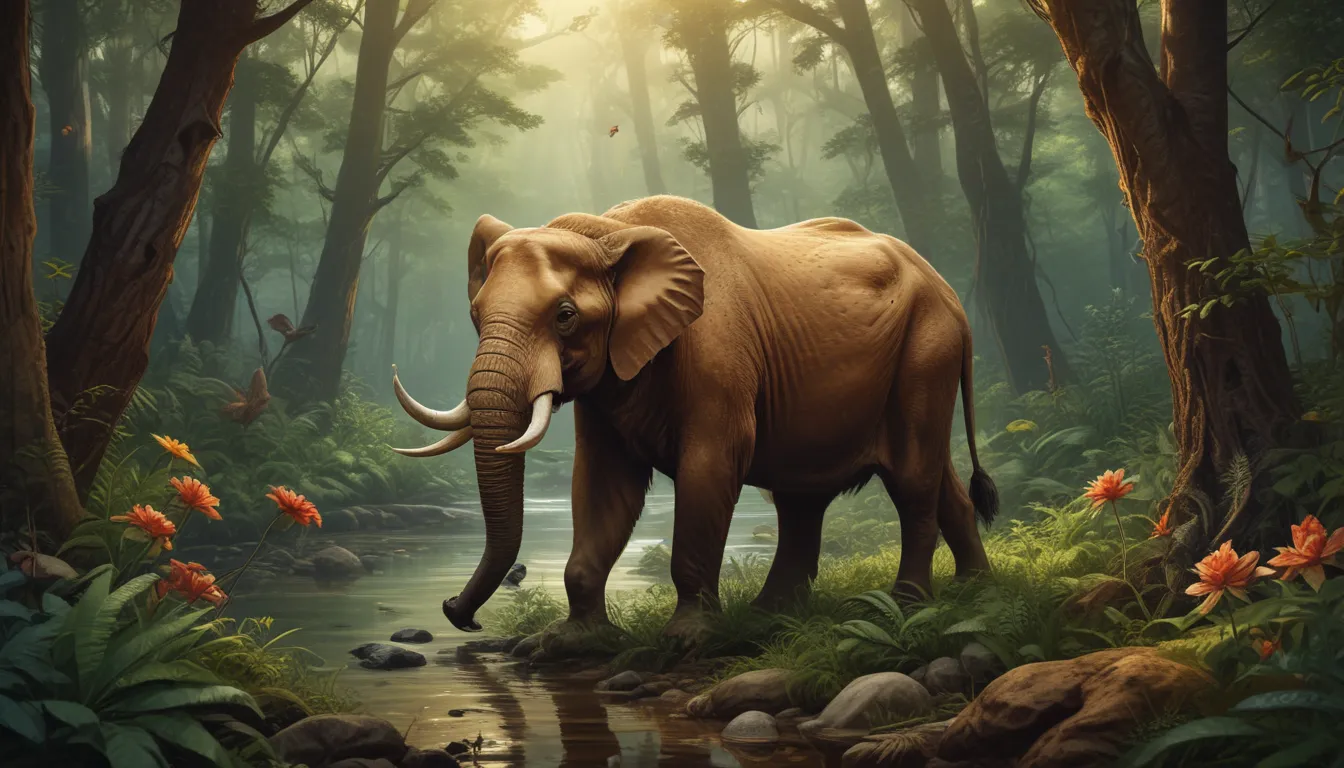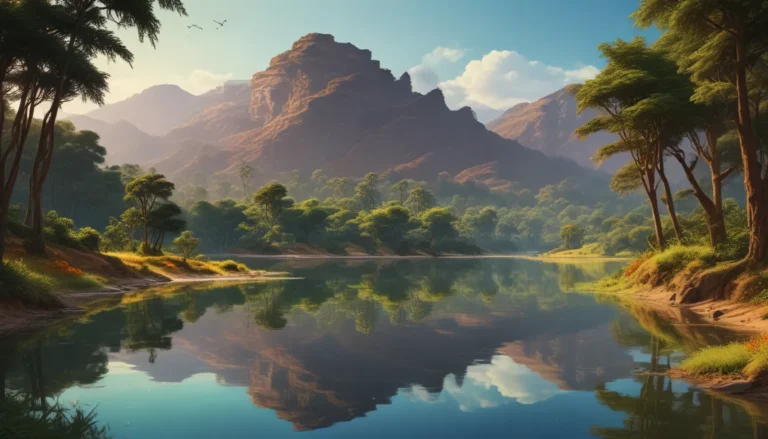The pictures we use in our articles might not show exactly what the words say. We choose these pictures to make you interested in reading more. The pictures work together with the words but don’t take their place. The words still tell you the important facts.
The natural world is a treasure trove of diversity and wonder, with wildlife playing a vital role in maintaining the delicate balance of our ecosystems. From the icy depths of Antarctica to the lush rainforests of the Amazon, animals can be found in every corner of the globe, showcasing their adaptability and resilience. In this article, we will delve into 19 fascinating facts about wildlife that will leave you in awe of the incredible creatures we share this planet with.
The Marvels of Wildlife
- Over 8.7 million known species: Scientists estimate that there are over 8.7 million species of animals on Earth, with new discoveries being made constantly. This staggering number showcases the immense biodiversity that exists in the animal kingdom.
- Blue whale, the largest animal: The blue whale holds the title for being the largest animal on the planet, measuring up to 100 feet in length and weighing around 200 tons. Its sheer size is a testament to the awe-inspiring diversity of wildlife.
- Cheetah, the fastest land animal: With top speeds of up to 70 miles per hour, the cheetah is renowned for its unmatched agility and lightning-fast running abilities. Its incredible acceleration allows it to go from 0 to 60 mph in just a few seconds.
Remarkable Adaptations and Behaviors
- Male seahorses give birth: In a unique role reversal, male seahorses carry the eggs and give birth after a courtship ritual. This fascinating behavior showcases the diversity of reproductive strategies in the animal kingdom.
- Arctic tern’s epic migration: The Arctic tern embarks on an incredible journey spanning over 44,000 miles from the Arctic to the Antarctic and back again, making it the longest known migration of any bird. This remarkable feat highlights the amazing endurance of wildlife.
- Fireflies synchronized flashes: Certain species of fireflies exhibit a mesmerizing display known as “lightning bugs,” where they synchronize their flashes to create a dazzling light show. This phenomenon is both beautiful and mysterious, showcasing the enchanting behaviors of wildlife.
Unique Abilities of Wildlife
- Pistol shrimp’s sonic boom: The pistol shrimp has an astonishing ability to create a sonic boom by snapping its oversized claw at high speeds, generating a loud “crack” sound. This remarkable feature demonstrates the incredible adaptations of wildlife.
- Vampire bat feeds on blood: Contrary to fictional portrayals, vampire bats exist and rely on blood as their primary source of nutrition. Their unique feeding habits provide a glimpse into the diverse dietary behaviors of wildlife.
- Axolotl’s regenerative abilities: The axolotl, a species of salamander native to Mexico, possesses the remarkable ability to regenerate lost body parts, including limbs, spinal cord, and even parts of its brain. This extraordinary regenerative capability is a testament to the resilience of wildlife.
Diverse Habitats and Ecosystems
- Oceans cover over 70% of the Earth’s surface: The vastness of the oceans is teeming with wildlife, from tiny plankton to massive whales. Marine ecosystems are incredibly diverse and essential for the health of our planet, showcasing the importance of ocean conservation.
- Walking stick insect’s camouflage: The walking stick insect has evolved an ingenious defense mechanism by mimicking a twig, blending seamlessly with its surroundings. This remarkable camouflage technique protects it from predators, highlighting the adaptability of wildlife.
- Satanic leaf-tailed gecko’s camouflage skills: Found in Madagascar, the Satanic leaf-tailed gecko has evolved incredible camouflage techniques, resembling a dead leaf to hide from predators. Its ability to mimic dried foliage showcases the diversity of wildlife adaptations.
Extraordinary Facts About Wildlife
- Komodo dragon’s venomous saliva: The Komodo dragon possesses venomous saliva, containing toxic proteins that can cause a variety of effects, including blood thinning and increased bleeding. This lethal feature adds to the mystique of this formidable predator.
- Bees’ unique communication: Honeybees engage in a dance known as the “waggle dance” to communicate the location of food sources to other colony members. This intricate form of communication highlights the complex social structures of wildlife.
- Platypus, a unique mammal: The platypus is renowned for laying eggs, possessing a duck-like bill, webbed feet, and the ability to sense electrical signals from prey. This remarkable mammal showcases the fascinating diversity of wildlife.
Appreciating and Protecting Wildlife
From the incredible migration patterns of birds to the regenerative abilities of salamanders, wildlife never ceases to amaze us with its remarkable features and behaviors. By preserving and protecting their habitats, we can ensure that future generations can continue to witness the beauty and wonder of these incredible creatures.
Conclusion
Wildlife is a fascinating and integral part of our natural world, showcasing the beauty and complexity of nature. Through the 19 facts presented in this article, we have gained a deeper understanding of the wonders and importance of wildlife conservation. By appreciating and protecting wildlife, we can contribute to the preservation of biodiversity and promote a sustainable future for both wildlife and humanity.
FAQs
Q: How diverse is wildlife?
A: Wildlife encompasses an incredible diversity of species, ranging from insects and birds to mammals and marine creatures. Estimates suggest there are millions to tens of millions of species.
Q: Why is wildlife conservation important?
A: Wildlife conservation is crucial for maintaining biodiversity, ecosystem balance, and preserving the natural beauty of our planet. It also safeguards essential services like pollination and seed dispersal.
Q: What are some threats to wildlife?
A: Wildlife faces threats like habitat loss, climate change, poaching, pollution, and invasive species. These factors can disrupt ecosystems and lead to species extinction.
Q: How can individuals contribute to wildlife conservation?
A: Individuals can support wildlife conservation by backing conservation organizations, engaging in habitat restoration, promoting sustainable practices, and advocating for environmental policies.
Q: What is the role of national parks in wildlife conservation?
A: National parks and protected areas provide safe havens for wildlife and their habitats, ensuring the preservation of ecosystems and species. They play a critical role in wildlife conservation efforts.
As we continue to explore and learn about wildlife, let us be inspired to protect and conserve the remarkable creatures that enrich our planet. By working together, we can make a positive impact and secure a brighter future for wildlife and humanity.






